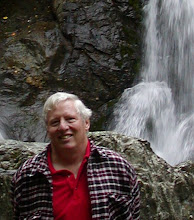One benefit that can come from teaching students (the earlier the better) about using Web 2.0 collaboration is that this technology can be used to create electronic portfolios. A brand new organization with an acronym that has way too many vowels to ever show up in Wheel of Fortune has been created -- AAEEBL (Association for Authentic, Experiential, and Evidence-Based Learning). Their goal seems to be to create standards for ePortfolios.
There apparently many view of what these are and how they can be used (http://campustechnology.com/Articles/2009/03/04/No-There-There-in-ePortfolio.aspx?Page=1). Even before digital technology, portfolios were used in many professions. For example most photographers, models and graphic artists have portfolios containing samples of their work. Many contractors specializing in landscaping, remodeling or redecorating have notebooks containing their work as well. A good ePortfolio can be used in a similar manner. It can enhance existing physical portfolios in many ways. Consider a photographer -- she might have a portfolio containing recent work that she can take with her on interviews. These photographs might also be displayed on a web site that contains her ePortfolio. Her ePortfolio can also contain her blog where she has written articles about composing photographs, etc.
Digital technoloy and Web 2.0 publishing tools open up new possibilities for ePortfolios. It is now possible for anyone to create and publish a collection of articles to showcase their talents. Items that can publish include term papers and projects from school, and items from other activities such as internships, part time jobs and hobbies. In addition to the traditional arts professions, ePortfolios can be used to many other professions as well. Teachers can showcase lessons and learning activities that they create or improve. Software engineers can showcase open source contributions and web sites they contributed to. Lawyers can display writing samples and significant court cases they participated in. Brewmasters can showcase beer recipes they have crafted. And so on.
One of the keys to all this publication is education -- students need to understand web-based publication, social networking and collaboration. But this education should not be in place of other learning activities. That is, we should not replace chemistry and geography with Web 2.0 technologies. It should be possible to incorporate Web 2.0 technologies as part of the learning activities themselves -- that way, students learn the subject matter, and learning about the technoloigy of the day (in this case Web 2.0) comes along for the ride.
Thursday, May 21, 2009
Tuesday, May 5, 2009
Using Web 2.0 type tools could make for some fun assignments
I just came across this
and this
Which got me thinking -- this type of activity could be used to make some fun assignments for almost any subject.
History -- assign roles, have students tweet and react to other tweets for interesting historical incidents. Or set up social networks (you can create one on ning.com), with students creating accounts representing various historical figures. Recognize especially creative remarks, and obscure but interesting posts. In addition, students could create a wiki around the event integrated into the activity.
Literature -- These types of activities can be used to help students understand works of literature as well. If Ismael could tweet, what would his tweets say? How about the whale? If they were on a social network together, how would the characters interact?
Art -- Take a tour through an art museum (real or virtual: http://www.artrenewal.org/) students can tweet about the various works, or, what if the students pretended they were artists using a social network to make comments on each others' paintings -- what would they say, what types of questions would they ask? Students who do some additional research about the artists could have a lot of fun with this type of activity.
and this
Which got me thinking -- this type of activity could be used to make some fun assignments for almost any subject.
History -- assign roles, have students tweet and react to other tweets for interesting historical incidents. Or set up social networks (you can create one on ning.com), with students creating accounts representing various historical figures. Recognize especially creative remarks, and obscure but interesting posts. In addition, students could create a wiki around the event integrated into the activity.
Literature -- These types of activities can be used to help students understand works of literature as well. If Ismael could tweet, what would his tweets say? How about the whale? If they were on a social network together, how would the characters interact?
Art -- Take a tour through an art museum (real or virtual: http://www.artrenewal.org/) students can tweet about the various works, or, what if the students pretended they were artists using a social network to make comments on each others' paintings -- what would they say, what types of questions would they ask? Students who do some additional research about the artists could have a lot of fun with this type of activity.
Subscribe to:
Comments (Atom)
